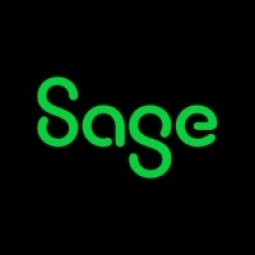公司规模
SME
地区
- America
国家
- United States
- Canada
- Mexico
产品
- Sage 100 ERP
- Custom Office within Sage 100 ERP
- S/O Commissions by Line Item
技术栈
- Virtual Private Network (VPN) technology
- DSL connection
实施规模
- Enterprise-wide Deployment
影响指标
- Productivity Improvements
- Cost Savings
技术
- 应用基础设施与中间件 - API 集成与管理
适用行业
- 电信
- 航天
适用功能
- 销售与市场营销
- 商业运营
用例
- 供应链可见性(SCV)
- 库存管理
服务
- 系统集成
- 软件设计与工程服务
关于客户
Schleuniger, Inc. 是电线加工设备领域的领先企业。该公司以其精确、优质和干净的连接而闻名,这些连接由 Schleuniger 最先进的机器切割、剥皮、标记和端接。Schleuniger 秉承“精准至上”的座右铭,建立了全球业务,向电信、航空航天等高科技行业销售产品。该公司的产品范围从紧凑型台式剥线机到大型全集成电线加工系统。Schleuniger 的精密半自动和全自动设备可切割、剥皮和标记所有类型的电线和电缆,包括同轴电缆、光纤电缆和多芯电缆。以每小时高达 10,000 件的速度实现高精度质量,从一个应用到另一个应用的工具转换最少。
挑战
Schleuniger 是一家面向高科技行业的全球性企业,需要一套新的会计系统,供其四个分支机构(包括加拿大和墨西哥的分支机构)使用。该公司希望确保所有分支机构都能提供高质量的客户服务。然而,由于分支机构规模较小,投资昂贵的广域网非常困难。该公司需要一套解决方案,让分支机构能够访问相关业务信息、远程输入信息,并像在总部的 LAN 上一样获得性能。
解决方案
Schleuniger 选择 Sage 100 ERP 作为其解决方案。通过早期采用虚拟专用网络 (VPN) 技术,该公司发现它可以通过标准 DSL 连接在 Internet 上使用 Sage 100 ERP。现在,分支机构可以安全地登录 Sage 100 ERP,访问相关业务信息,远程输入信息,并像在总部的 LAN 上一样接收性能。而且它的速度很快。曾经需要半个多小时才能完成的报告在大约一分钟内就可以运行。Schleuniger 的 MIS 经理 Sean Matulonis 说,实施过程出奇的简单。“VPN 技术太新了,我们不知道会有什么结果。然而,Sage 100 ERP 系统的表现比我们想象的要好。”
运营影响
数量效益

Case Study missing?
Start adding your own!
Register with your work email and create a new case study profile for your business.
相关案例.

Case Study
Airbus Soars with Wearable Technology
Building an Airbus aircraft involves complex manufacturing processes consisting of thousands of moving parts. Speed and accuracy are critical to business and competitive advantage. Improvements in both would have high impact on Airbus’ bottom line. Airbus wanted to help operators reduce the complexity of assembling cabin seats and decrease the time required to complete this task.

Case Study
Aircraft Predictive Maintenance and Workflow Optimization
First, aircraft manufacturer have trouble monitoring the health of aircraft systems with health prognostics and deliver predictive maintenance insights. Second, aircraft manufacturer wants a solution that can provide an in-context advisory and align job assignments to match technician experience and expertise.

Case Study
Aerospace & Defense Case Study Airbus
For the development of its new wide-body aircraft, Airbus needed to ensure quality and consistency across all internal and external stakeholders. Airbus had many challenges including a very aggressive development schedule and the need to ramp up production quickly to satisfy their delivery commitments. The lack of communication extended design time and introduced errors that drove up costs.

Case Study
Developing Smart Tools for the Airbus Factory
Manufacturing and assembly of aircraft, which involves tens of thousands of steps that must be followed by the operators, and a single mistake in the process could cost hundreds of thousands of dollars to fix, makes the room for error very small.

Case Study
Accelerate Production for Spirit AeroSystems
The manufacture and assembly of massive fuselage assemblies and other large structures generates a river of data. In fact, the bill of materials for a single fuselage alone can be millions of rows of data. In-house production processes and testing, as well as other manufacturers and customers created data flows that overwhelmed previous processes and information systems. Spirit’s customer base had grown substantially since their 2005 divestiture from Boeing, resulting in a $41 billion backlog of orders to fill. To address this backlog, meet increased customer demands and minimize additional capital investment, the company needed a way to improve throughput in the existing operational footprint. Spirit had a requirement from customers to increase fuselage production by 30%. To accomplish this goal, Spirit needed real-time information on its value chain and workflow. However, the two terabytes of data being pulled from their SAP ECC was unmanageable and overloaded their business warehouse. It had become time-consuming and difficult to pull aggregate data, disaggregate it for the needed information and then reassemble to create a report. During the 6-8 hours it took to build a report, another work shift (they run three per day) would have already taken place, thus the report content was out-of-date before it was ever delivered. As a result, supervisors often had to rely on manual efforts to provide charts, reports and analysis.




